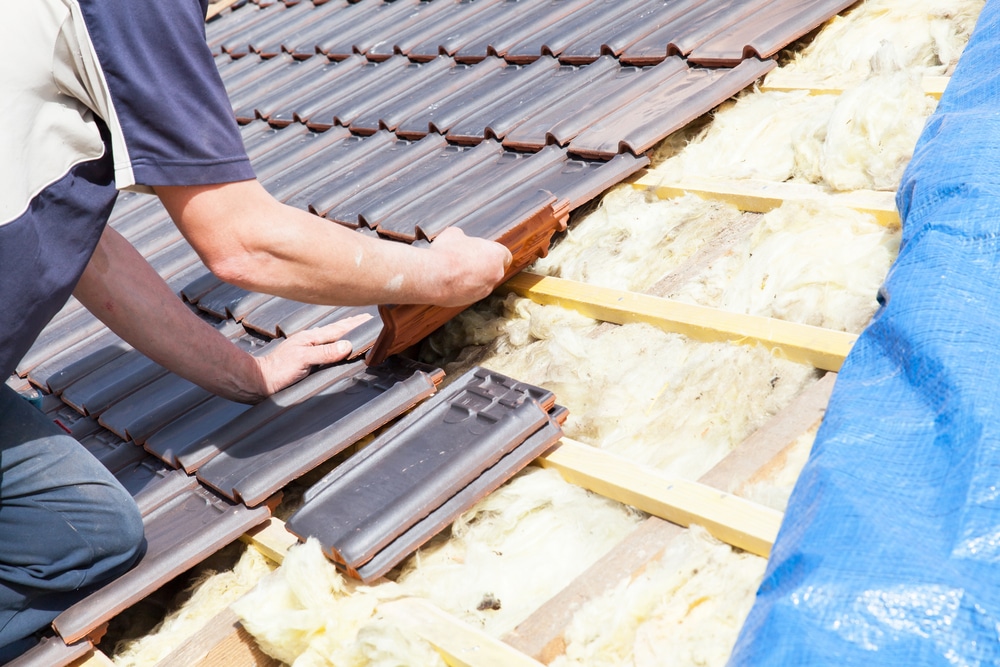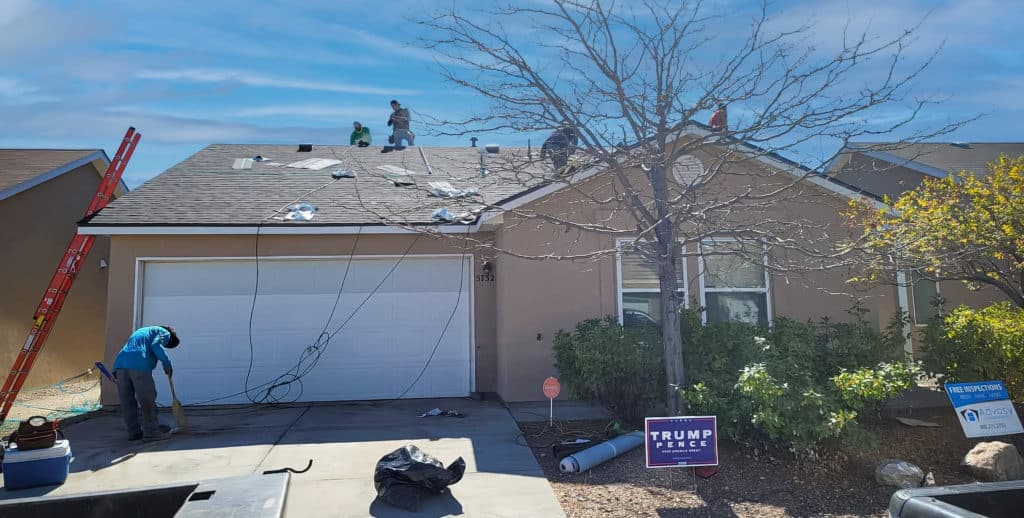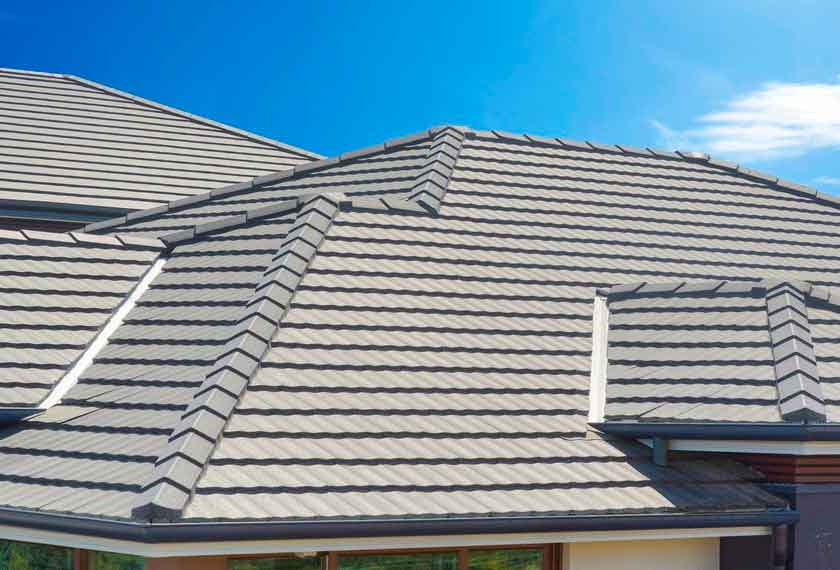The role of roof ventilation in preventing heat buildup is a topic that warrants further research and discussion. As temperatures rise, the need to maintain proper insulation and air flow within our homes becomes more important than ever before. This article will explore the ways in which proper roof ventilation can help reduce power bills, improve comfort levels inside the home, and prevent serious structural damage caused by excessive heat.
Heat buildup poses numerous risks for homeowners; it increases energy costs due to inefficient cooling systems, causes discomfort through high humidity levels, and even leads to costly repairs as wood warps or shingles deteriorate under extreme temperatures. However, with careful consideration and maintenance of one’s roof system, these issues can be avoided. Roof ventilation plays an integral part in achieving this goal – providing adequate airflow throughout the attic space while keeping moisture at bay.
By utilizing modern techniques such as ridge vents and soffit vents, homeowners can ensure their roofs are functioning properly during hot summer months. Furthermore, understanding how each component works together helps create a balanced solution tailored to specific needs. In conclusion, this article seeks to explain why roof ventilation should not be overlooked when looking for methods of reducing energy consumption and safeguarding against potential damage from heat buildup inside your home.
What Is Roof Ventilation?
Roof ventilation is a process that allows air to move in and out of the attic space, thus reducing heat buildup. It works by providing an opening for outside air to enter into the attic while also allowing hot attic air to escape. This helps reduce temperatures inside the home during summer months when rising outdoor temperatures can cause issues with indoor comfort. In addition, roof ventilation can help prevent damage to building materials due to excess moisture build-up as well as protect against ice dams which occur during winter months.
There are two main types of roof ventilation: Passive or Static Ventilation and Active or Mechanical Ventilation. Passive ventilation relies on natural forces such as convection currents, wind pressure differences, stack effect, etc., whereas active ventilation utilizes mechanical equipment such as fans, turbines and soffit vents installed along the edge of the roof line. Both systems have their benefits but passive systems tend to be more cost effective while active systems provide better control over indoor temperature levels and humidity levels within the home.

It’s important to note that proper insulation is also required in order for roof ventilation systems to work effectively; otherwise energy loss may take place through uninsulated walls or roofs resulting in higher heating bills and reduced indoor comfort. Therefore it is recommended that homeowners consult a specialist before embarking on any type of roof ventilating system installation project. When done correctly, properly installed roof vents can play an integral role in preventing excessive heat buildup within homes throughout all seasons of the year – helping households stay comfortable without breaking the bank.
Benefits Of Roof Ventilation
Roof ventilation is an important part of building a safe and comfortable space. It has the potential to reduce heat buildup, improve air circulation, and extend the life of roofing materials. This article will explore the benefits of roof ventilation in detail.
Firstly, roof ventilation can help prevent excessive heat buildup inside buildings. During hot summer days, temperatures can soar within unventilated roofs leading to thermal discomfort in living spaces below. Properly ventilating a roof helps create an escape route for this trapped heat, allowing it to disperse before entering the interior environment. In addition to reducing indoor temperatures, properly installed vents also work to draw out moist air from bathrooms or laundry rooms that could cause water damage over time if left unchecked.
Secondly, adding vents to existing roofs enhances air circulation throughout a building’s attic as well as other areas such as bedrooms and closets where heated air accumulates quickly during winter months due to lack of airflow. By providing regular outlets for stale air and welcoming fresh new oxygen into these enclosed areas more frequently, homeowners are able to enjoy better quality sleep with fewer headaches or respiratory issues caused by stagnant environments. Furthermore, introducing good ventilation habits early on may even reduce energy bills since heating systems no longer have to work twice as hard when there isn’t enough natural airflow present indoors.
Finally, installing adequate roof ventilation extends the lifespan of both asphalt shingle and metal sheet coverings significantly by preventing moisture build-up which encourages mold growth and weakens structural integrity over time. Additionally, proper insulation coupled with appropriate levels of ventilation ensures long lasting safety standards so that all occupants remain protected against dangerous weather conditions while occupying their homes year round without fear of any major disasters occurring unexpectedly down the line.
Types Of Roof Ventilation
When it comes to roof ventilation, there are several different types which can be used. These range from natural solutions such as turbines and static vents, all the way up to powered systems like ridge vents or attic fans. Natural solutions typically consist of a vent placed on the roof in order to allow air flow through the attic space. Turbines work by spinning with the wind, creating an updraft that draws outside air into the attic space while also expelling hot air out of them. Static vents are similar but they do not require any power source and rely solely on convectional airflow principles in order to draw air into and out of attics.
Powered roof ventilation options include ridge vents and attic fans. Ridge vents are installed along ridges running across roofs and provide constant passive airflow throughout attics without requiring much maintenance or energy use. Attic fans on the other hand, usually must be manually turned on at certain times during warmer weather periods in order to effectively reduce heat buildup within buildings. Both systems are effective for controlling temperature levels but have their own unique benefits depending on specific needs of users.
Roof ventilation is important for preventing heat buildup within structures due its ability to introduce cool outside air inside building interiors while simultaneously removing warm interior air from attics. This helps maintain indoor temperatures at comfortable levels regardless if it’s summer or winter season – both scenarios benefit from proper rooftop ventilation solutions due to their effectiveness against extreme temperature shifts between climates outdoors versus indoors.
How Heat Builds Up In A Roof
Heat buildup in a roof can have far-reaching effects. It can lead to major structural damage, water leakage, and decreased energy efficiency that could cause increased utility bills. In order to understand how heat builds up in a roof, it is important to look at the complex interaction between air temperature, insulation levels, and solar radiation exposure.
During the hot summer months, the sun’s rays hit a rooftop and add additional heat load on top of higher ambient temperatures. Without proper ventilation, this added heat has nowhere to go but into the attic space below which increases its temperature even further. This not only causes discomfort for those living inside – due to higher indoor temperatures – but also puts extra stress on any materials used in constructing the roof as they are forced to absorb more thermal energy than what they were designed for.
A way to combat this issue is by installing some form of venting system such as static vents or turbines that allow warm air trapped inside an attic space escape outside while being replaced with cooler fresh air from outdoors. Not only does this help reduce any uncomfortable temperatures inside the home but also helps maintain optimal insulation R-values thereby leading to greater energy efficiency throughout the year.
Factors That Affect Roof Ventilation Efficiency
The efficiency of roof ventilation is determined by a number of factors. These can include the type of ventilation product used, its placement in the building structure and the total area to be ventilated. Moreover, some materials are more effective at preventing heat buildup than others.
In order for any kind of roof ventilation system to be successful, it must have proper installation as well as adequate airflow. This means that vents should be properly placed in areas where air will flow freely from outside into the attic or other enclosed spaces. Additionally, if insulation has been installed on the ceiling or walls, this needs to be taken into account when determining how much space is available for air circulation.
Finally, understanding local climate conditions and weather patterns can also help ensure that a roof ventilation system remains efficient over time. By taking these components into consideration during the planning stages, homeowners can maximize their efforts to prevent heat buildup in their homes without sacrificing comfort or energy efficiency.
How Roof Ventilation Helps Prevent Heat Buildup
Efficient roof ventilation is a critical component of any home or building, as it helps to reduce the buildup of heat. In this article, we will explore how roof ventilation can help prevent excessive heat from accumulating in a space.
Firstly, when warm air rises inside an enclosed area such as a house, it naturally reaches the top of the room where it has nowhere else to go. Without sufficient airflow through vents on the roof and upper walls, this hot air can become trapped and cause temperatures to rise significantly. The installation of proper roof ventilation allows for cooler outside air to enter at higher levels and push out the warmer interior air. This process creates cross-ventilation which effectively lowers indoor temperatures by preventing too much heat from gathering at the highest points of a structure.
In addition, some types of ventilation systems are equipped with special features like fans that are designed to increase circulation even further. These exhaust fans draw up hot attic air while simultaneously drawing down cool external air into the living areas below. As these two streams interact they create negative pressure which pulls out heated gases and moisture from within a building’s confines. By extracting airborne pollutants before they have time to accumulate, these ventilators not only improve temperature control but also provide better indoor air quality overall – making them invaluable components for helping maintain comfortable living conditions throughout a property year round.
Overall, efficient roof ventilation plays an important role in reducing uncomfortable heat buildups indoors while improving energy efficiency as well as healthy living environments all around. With modern technology offering increasingly effective solutions that blend seamlessly with existing architecture, there’s no reason why homeowners shouldn’t take advantage of its many benefits today.
Considerations Before Installing Roof Ventilation
Roof ventilation is a key component in preventing heat buildup, and thus an important consideration before installation. When making decisions about roof ventilation, several factors should be kept in mind to ensure it is done correctly.
First, the size of the system needs to be determined. This includes both the square footage of the attic space and the amount of air that will move through the vents. The size of the system impacts how much energy can be saved by reducing heat build up and increasing efficiency. Additionally, it affects noise levels from fans or other components used for venting hot air out through the roof cavity.
Second, materials chosen for insulation need to reflect current building codes as well as climate conditions. For example, if living in a region with cold winters, insulating material with higher R-values should be selected which are designed to trap warm air indoors during colder months while still allowing cool air into interior spaces when needed. Furthermore, any existing mechanical systems such as HVAC ductwork must also be taken into account when selecting insulation products suited for roof ventilation purposes.
Finally, proper maintenance is essential for efficient operation over time and long lasting results. Regular inspections should be conducted at least once each year to check for any issues that may arise due to weather exposure or age related deterioration. Any necessary repairs should then be made promptly so that optimal performance is maintained throughout its lifespan.
Maintenance Tips For Roof Ventilation
Maintaining roof ventilation is a vital component in preventing heat buildup, and it requires ongoing attention. Proper maintenance can ensure that your ventilation system continues to operate efficiently and reliably. This article provides some tips on how to maintain your roof ventilation system correctly.
The first step in maintaining your roof ventilation system is regularly inspecting the components for signs of wear and tear. Make sure to check all parts of the system including the blower motor, fan blades, ducts, vents, fans, and other pieces for any damage or debris accumulation. You should also make sure that there are no blockages or loose connections within the system that could reduce airflow. Additionally, you should clean out dirt and dust from the filters and replace them if they become too clogged with debris.
Finally, it is important to periodically check the seals around openings such as attic doors and windows to make sure they are still tightly secured. If necessary, reseal these areas using appropriate materials so that warm air doesn’t escape through gaps or cracks in your insulation layer. By following these maintenance tips for your roof ventilation system, you can rest assured knowing that your home is well-ventilated and protected against excessive heat build-up.




